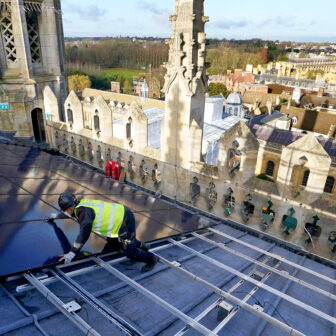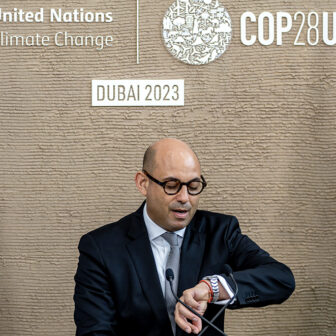IN FEWER than four decades, Australia must transform its electricity sector from one dominated by coal and gas with high greenhouse gas emissions towards one producing near zero emissions. A carbon price is vital to making the transition, but in order to make it at lowest cost, the carbon price needs support.
A new Grattan Institute report, Building the Bridge:A Practical Plan for a Low-Cost, Low-Emissions Energy Future, sets out an essential step that the federal government can take to address the limits of the carbon market.
The report focuses on a widely recognised and fundamental problem in current climate change policy. With a carbon price alone, potential developers of low-emissions technologies are reluctant to invest on the scale required to significantly reduce Australia’s emissions. The costs and risks of taking these technologies to market are too high, the potential returns too low. On top of that, developers need a long-term, reliable carbon price to underpin their investments and make their low-emissions technologies competitive with traditional high-emissions electricity sources.
But the carbon price is inherently uncertain because it depends on the decisions of governments. If they do not maintain their commitment to emissions constraints, the carbon price will stay too low, and investment in low-emissions technologies will remain critically inadequate.
The Garnaut Climate Change Review and a range of organisations including the OECD and the International Energy Agency have recognised these challenges. To date, though, no practical policy solution has emerged.
Grattan’s report proposes that government enter into long-term contracts with project developers to deliver electricity at a price that makes the most efficient low-emission technologies viable. It awards the contracts through a ten-year series of six-monthly auctions in specific technology categories,which would include technologies that concentrate solar thermal energy, for example. Developers bid to provide low-emissions electricity and the lowest bids succeed. The scheme could produce about 5 per cent of Australia’s power – not a large amount, but enough to get low-emissions electricity projects started at the lowest possible cost.
Uncertainty and risk characterise climate change policy in Australia and internationally. Also uncertain is the future cost of a wide range of low-emission electricity technologies, and their capacity to be “scaled up” to be economically viable and contribute to a shift in our energy sources. As is common in private sector investment, the best response to uncertainty is to build a portfolio of options at lowest cost over the long haul. As information is gained through progressive auctions and as technologies develop, the portfolio of supported technologies will be dynamically adjusted to provide greater support for success or, where aprropriate, withdrawal.
The scheme is not another subsidy for renewable energy. Australia has already had too many such subsidies – grant programs, rebates and other initiatives – with little reduction in emissions or technology costs. In the absence of carbon pricing, the Renewable Energy Target has certainly delivered significant abatement at reasonable cost. But once a robust emissions trading scheme is in place, this role will no longer exist, and the best option will be simply to grandfather the commercial commitments that have been made under this program.
Unlike these programs, the auction proposal focuses squarely on the real problem. It seeks to give low-emissions technology developers the certainty they need to invest. A developer who wins an auction bid would receive two payments: one that covers the risk of investing in an unproven technology, the other for the risk that the carbon price will not be high enough to match the long-term climate change targets that would make the technology commercially viable.
The critical objective is to get projects implemented at lowest possible cost. Developers must have secured finance before they bid and be as close as possible to beginning work. The experience project developers gain through building projects will enable them to cross the bridge to commercial viability – to learn by doing.
Competition and learning what works on the ground are the only ways for companies to work out which mix of technologies they should invest in over the long term. As costs come down and technologies become viable in the market, the government will withdraw support, beyond a well-managed carbon price.
A ten-year timeframe and clear rules for the auctions provide companies with a predictable investment environment, and multiple opportunities to invest. But in turn, developers must show over multiple auction rounds that the cost of their low-emissions technology is low and falling.
This new proposal is directly complementary to a carbon price. It addresses barriers and market failures that the existing carbon price cannot.
A change of government would probably lead to policy changes, including possible repeal of the carbon price legislation. The federal opposition has proposed an emissions reduction fund as the central element in its direct action plan if it wins government. The auction proposal could assist the emissions reduction fund to achieve its objective efficiently, again by delivering lowest cost, low-emission technologies.
The reverse auction proposal uses the competitive market to discover costs, the forward series of auctions to drive costs down, contracts to address key market and technology risks and the portfolio concept to deliver a lowest-cost set of options over time.
As with any risk management strategy, there is a cost to this proposal. But if we do nothing then the cost will be much higher as the emissions reduction task gets harder in years to come. Far better to free up constrained investment and innovation now, and put Australia on the most efficient path to a low-emissions future. •




